Handmade rugs such as Persian carpet, Baluchi rugs, Gabbeh rugs, etc. are a great way to dress up a space, and there are so many different rug décor style tips you can follow.
Rugs can make or break a room décor by setting the tone for the entire space. You have the option of going from neutral to colorful or solids to patterns.
Another fad is carpets that are layered. Layering is a fantastic option that isn't as difficult as it appears.
Have a look:
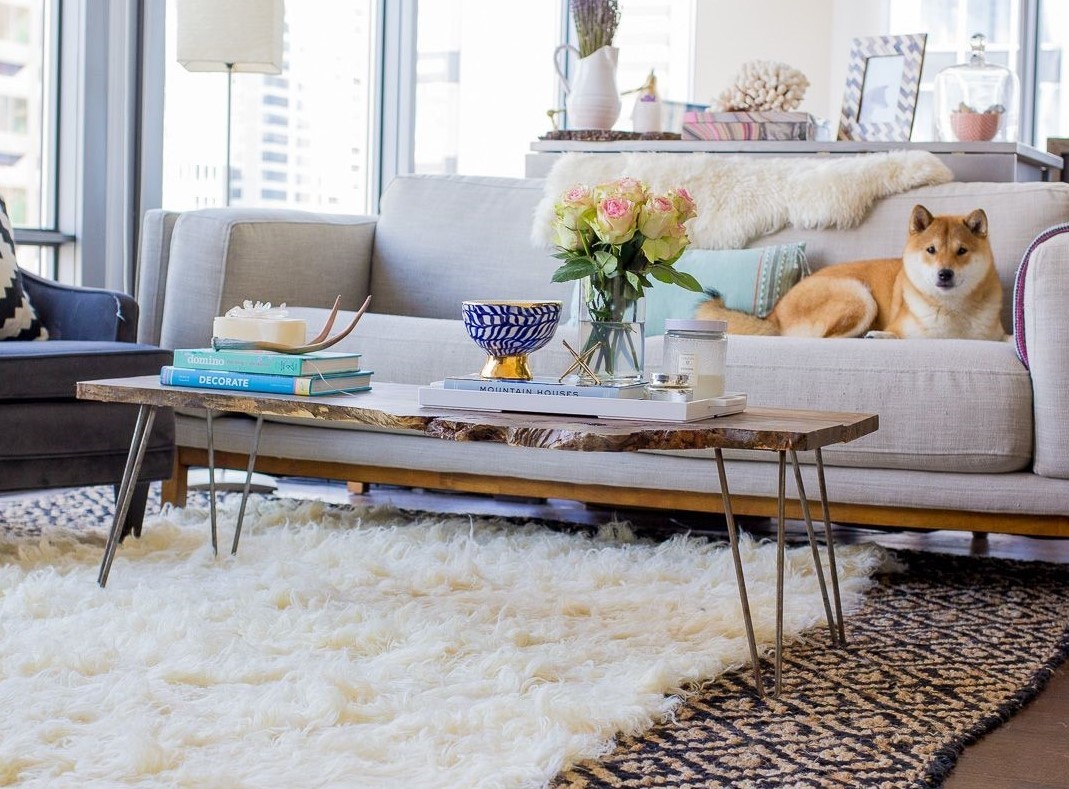
5 Expert Tips for Layering Your Rugs
Layering handmade rugs over each other, such as a Gabbeh rug over a jute rug, or a Bokhara rug over a beige colored Persian rug, is a great way of making a style statement in your interior décor.
Although a bit tricky, layering your handmade rugs is quite easy once you know what to do.
There are several ways to make rug layering style work in your house, and it can be used to solve a variety of issues as well. Such as, if your expensive Gabbeh rug has gotten stained somehow, you may still use it by covering the affected area with a faux rug, here’s how:
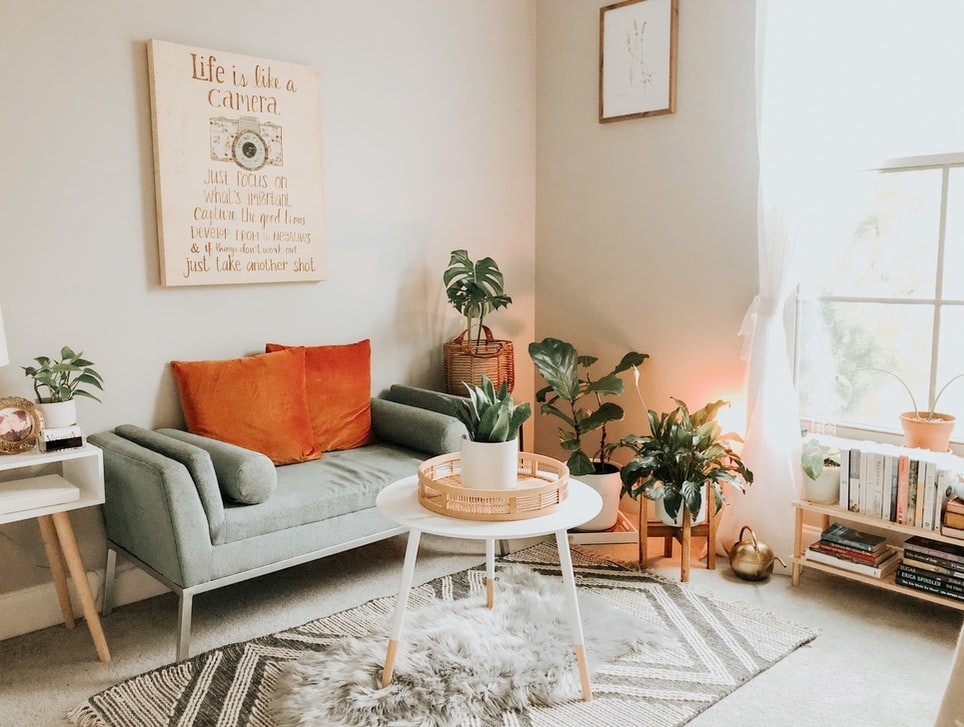
An area rug can be layered over another area rug or on top of a wall-to-wall carpet.
Here are a few suggestions for making this decorating method work for you:
1. Highlight a Specific Area
By layering a smaller rug on top of a bigger one, you may draw attention to a specific spot.
If you have a coffee table, bench, chest, or another particular object that you want to draw attention to, layering a rug is a great way to achieve this. It may also be used to distract your focus away from a certain region.
A small rug in another section of the room might draw the eye away from a piece of furniture or architectural aspect that you wish to hide.
Your bedroom, living room, or den are ideal places to layer rugs since they have plenty of space and not much furniture. We suggest a stacking pattern atop a pattern in a setting that is on the basic side.
Also we recommend combining a solid rug with a patterned Gabbeh rug if the space has wallpaper or a lot going on.
2. Utilize a Rug That’s Small in Size
Layering rug can help resolve the issue of “floating furniture” if you have a big room but accidentally bought a small rug.
According to area rug rules, there should be about 10 to 20 inches of bare floor between the edges of the area rug and the room's walls.
But, if you’ve accidentally purchased a handmade rug that’s smaller in size than what you actually need, you might not be able to utilize it without making the décor look chaotic, unless …
Obviously, unless you layer it over a bigger rug.
Try layering the Gabbeh rug or whichever rug you posses over a plain jute rug, or over a modern rug. Experiment different things until you really like what you see.
Putting the rug on a bias will usually draw attention to it, so consider if that's what you want or if you'd rather the eye be drawn somewhere else.
When layering rugs, it's preferable if the two carpets have different sizes. One should be larger and more prominent, while the others should be smaller and serve as a compliment. A 9-inch by 12-inch rug, for example, would look wonderful laid on top of a 6-inch by 9-inch rug.
A good rule of thumb is that the top rug should be at least 2/3 the size of the rug underneath it.
When layering rugs including Gabbeh rugs on Sale, various sizes work best.
One should be enormous and dominant, while the others should be smaller and serve as accents. Smaller rugs may be stored in a basket and placed out when you have visitors, which is a terrific way to use them in space.
Here’re some examples:
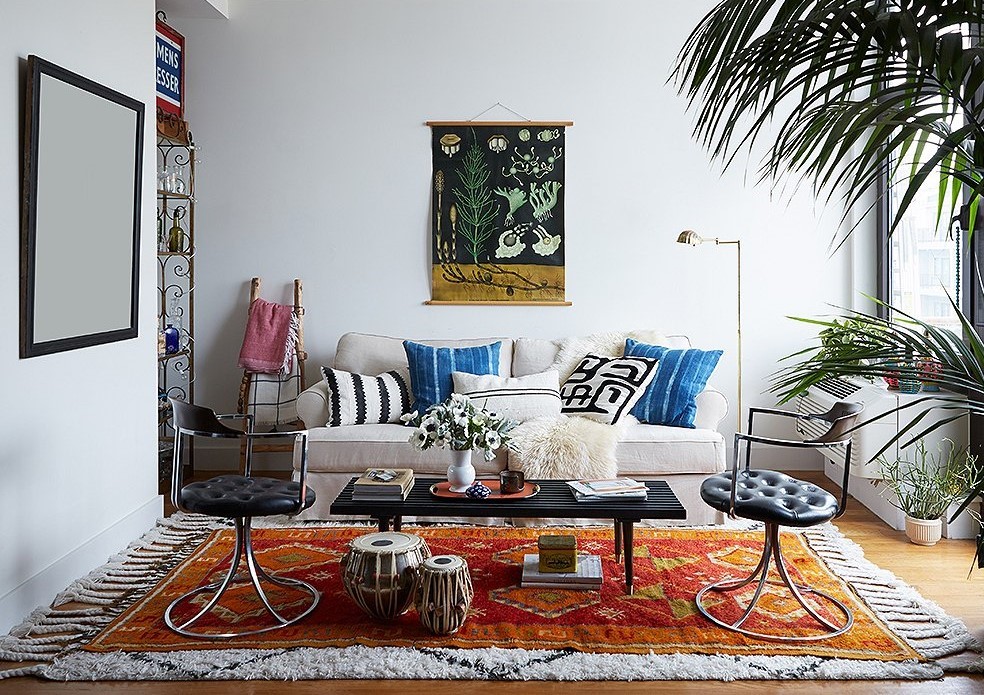
We love how this neutral-colored space has been brought to life by this orange tribal rug. Although the color schemes, patterns, pile height and style of both the rugs vary from each other largely, yet the experiment turned out great.
Here’s another one:
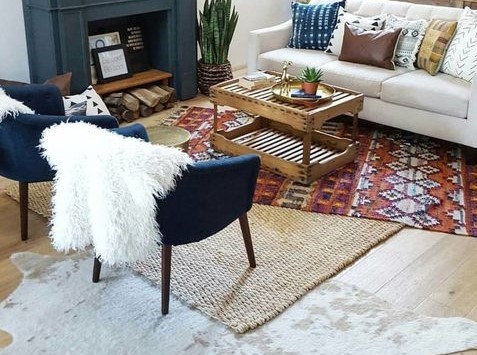
The best thing about this one is that three utterly different rugs a layered in a very unique manner, yet the décor doesn’t look haphazard in any way! You can layer your Gabbeh rug in a similar manner if it’s too small.
3. Experiment with Patterns
It's a bit tougher to stack patterned rugs or handmade Gabbeh rugs on top of each other than it is to layer patterned rugs on top of plain carpets, but it's doable.
When playing around with this style, try to pick colors that are similar in intensity. Mixing pastels with jewel tones, for example, is not a good idea.
If the designs are in the same color family, they can frequently work together. Look at this for instance:
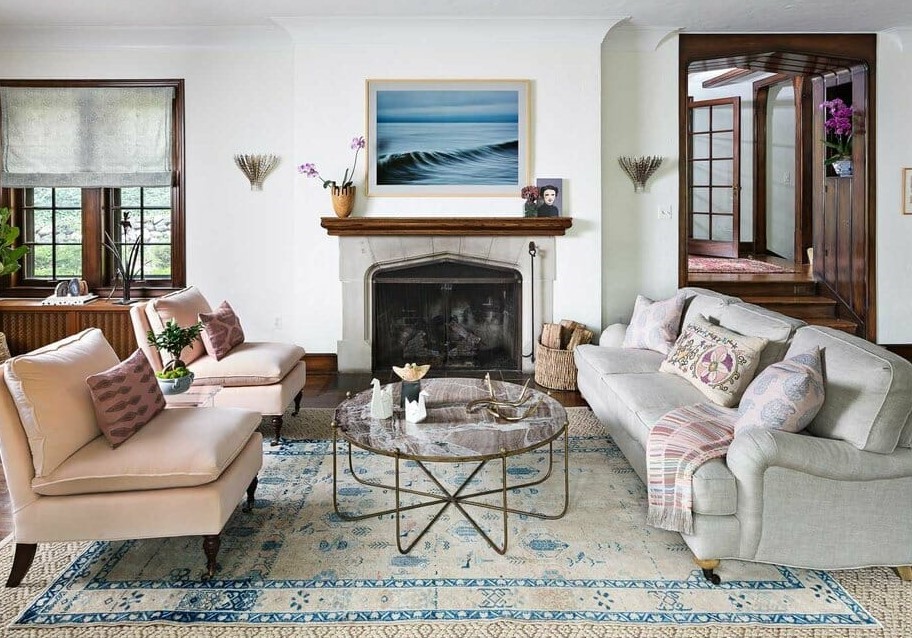
Consider tonal patterns as well. They may add depth and character to a space without being overpowering. When it comes to layering patterns, it's better to trust your instincts and follow your intuition. Go with it if you like how it appears.
It's tricky to layer rugs with wildly divergent patterns. It's best not to mix more than two styles. Stick to similar ones if you want mixed loads.
4. Consider the Colors
Layering carpets is popular because it allows people to play around with color. Layering provides for a neutral foundation with a smaller splash of color, as some individuals find a colorful carpet covering their whole floor to be too much.
Just look at this colorful runner rug layered over a basic neutral-colored rug:
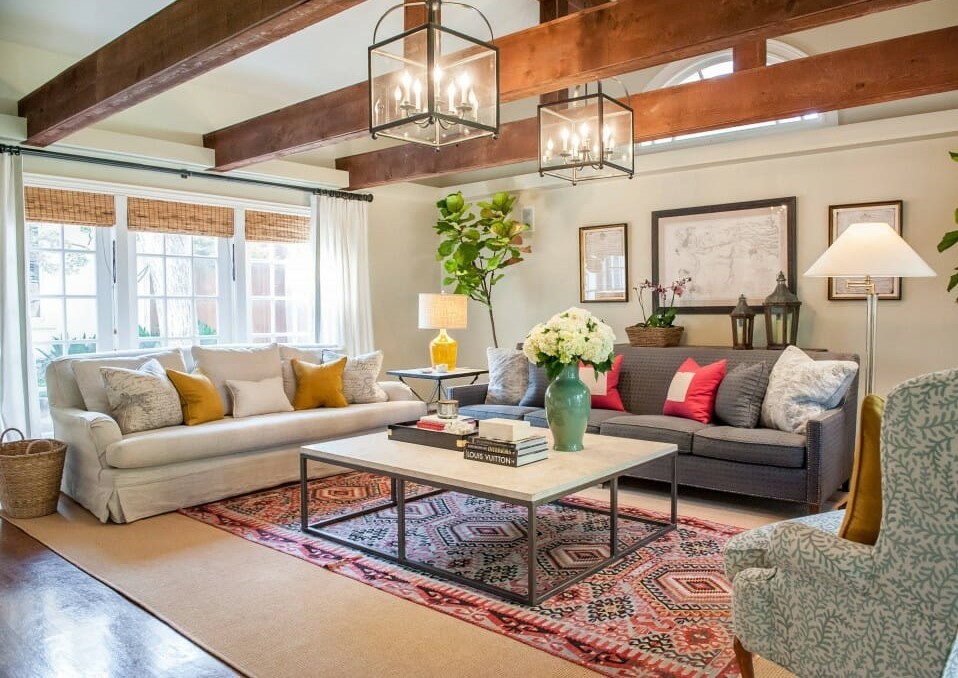
A single rug isn't enough color for some individuals. There's no reason why you can't overlay colors on top of each other, thankfully.
The idea is to choose colors that go well together as well as with the rest of the room's furnishings.
Toss in as many layers as you'd like.
5. Try Different Textures
To make this design work in your house, you don't need to use a lot of various colors and patterns—layering rugs with different textures on top of each other is a great way to bring depth to a space.
Consider layering a cowhide rug over a sisal rug, a sheepskin over a jute rug, or anything soft on top of a flat weave to create interest in a subtler but equally effective approach.
A brown hide contrasts with the neutral chairs and sofa, which helps to pick up on the fireplace surround and leather armchair. Wrap up in a sheepskin, it's soft and will add an extra layer of warmth when needed. It's small enough that it can be easily layered and moved with ease.
Enjoy the Experimentation!
Despite these recommendations, when it comes to layering carpets, there are no hard and fast laws. Rugs or Gabbeh rugs purchased online may be used in a variety of ways to make you the new design hero.
Follow your gut instincts, or attempt something you wouldn't normally do and push yourself a little. We constantly say that imperfect is the new perfect.













